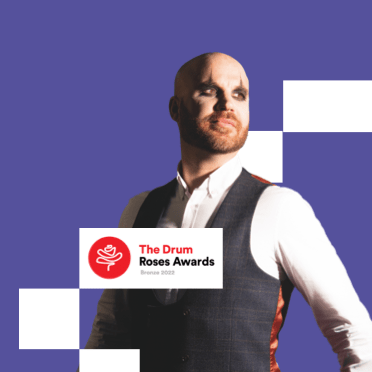B2B buyers often have a list of vendors in mind before they’ve even started the purchase process. How can brands make sure they’re on that list to dramatically increase their chances of winning the deal?
Lo! On the first day your buyer created a list, and the buyer saw that the list was good. As did the vendors who were on it – especially after a study by Bain & Company found that your chances of winning a B2B deal if you’re not on that day one list to be pretty slim – perhaps 10% or lower.
What’s more, of the 1,208 B2B purchasers they spoke to over 80% of them already had an idea who to put on their day one shortlist before they even started their research. Which, if the buyer doesn’t already know who you are and can’t recall your brand, reduces your chances even further when it’s time to look at vendors.

In short – if your buyer doesn’t have a favourable idea of who you are before they’re ready to buy, then the odds are stacked against you.
This addresses one of the big paradoxes in B2B marketing – how can you engage potential buyers if they’re just not in market, so aren’t going to give a fig about being your next MQL, let alone giving you any money? This is even trickier again if, as is often the case, they spend far more time out of market than in it.
To get this right brands need to build mental availability with their audience. Getting them familiar to the point that when Derek comes to need an oscillating widget it’s your Acme Oscillators brand that first comes to his mind. Whack, straight on the shortlist.
In this respect, the function we need marketing to serve is the same as a consumer looking to buy a pair of trainers or a tin of beans. It’s the “brand” element of the “brand and demand” mix you’re likely to have reflected in your marketing plans in some way, and there are two important factors to consider in looking to get it working effectively.
One is the creative you use. Plenty of studies have shown the correlation between the effective use of emotion in creative and how well marketing activity builds mental availability. We’re not talking about anything cheesy like brand love here, after all marketing is usually the uninvited guest in the living room/office/laptop. Instead, we need to be entertaining in a relevant and engaging way and so a strong creative idea can make a significant difference. The rub here is that it’s notoriously difficult to cram both this sort of long-term effect into creative as well as short term performance effects such as driving direct enquiries. Reworking performance ads for awareness building, or vice versa, is highly unlikely to cut it.
The same goes for content, too. Messaging that consistently pushes people to enquire or sign up is just going to fall on deaf ears. Instead, producing materials that offer expertise, advice, a different take on an industry issue or just simply interesting industry news can be extremely effective in maintaining strong exposure and building mental availability. Especially if they’re targeted and measured in the right way, using metrics such as excess share of voice.

Second is the importance of attention. We know that the number of times you reach an audience is going to have a big impact on the response you get, but it’s not just a case of chasing eyeballs. Marketing effectiveness analysts like Amplified Intelligence have shown that the level of attention marketing commands has a critical impact on its ability to boost mental availability. Across industries, sectors et al they suggest the minimum effective threshold is 2.5 seconds; anything below this and you’re on a sticky wicket. So choose your tactics and media carefully. Yes you’ll need to maximise reach/ impressions but only in tandem with attention. 1,000,000 eyeballs with an average 1 second attention span could well be much less effective than 500,000 eyeballs with an average 2.5 second attention span.
Above all, remember that you can’t expect quick wins from this activity. Impact is measured in months and years rather than days and weeks, so plan activity and budgets accordingly. But with the right campaigns in place you’ll be able to make sure your investment in brand best supports the wider business – and gets you onto more day one shortlists.




